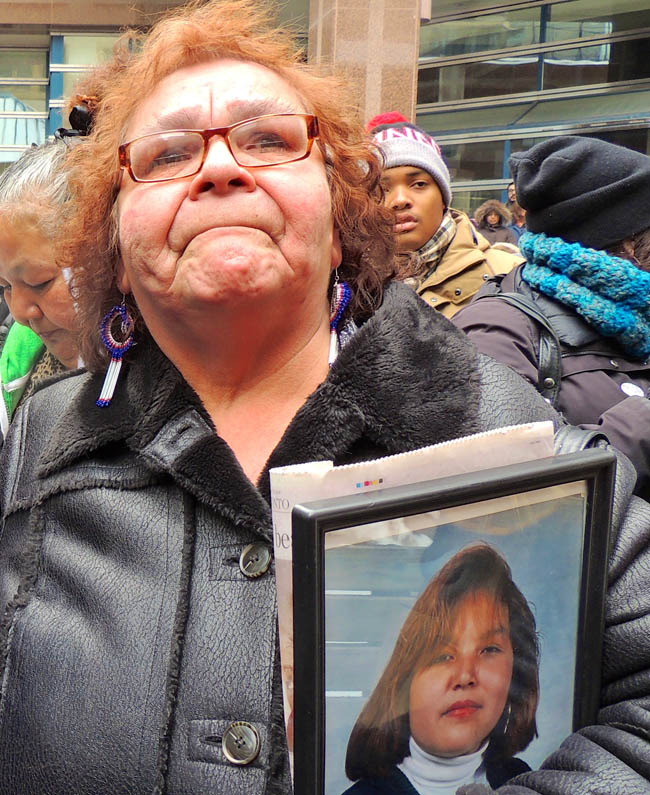Lawyers want missing and murdered women inquiry

TORONTO – Few were surprised last week when the federal government announced it would not follow up the March release of a special committee’s report on missing and murdered aboriginal women with a public inquiry into the issue.
After all, the government has resisted calls for years from native groups, women’s groups, and international human rights groups for such an inquiry.
But some were surprised that the Special Committee on Violence Against Indigenous Women itself didn’t call for an inquiry – especially in light of this article which suggests a public inquiry was among the recommendations in the original draft report that didn’t make it into a heavily redacted final version.
While the report notes that “several” witnesses called for an independent public inquiry, Pauktuutit Inuit Women of Canada is quoted as saying that the last thing aboriginal women need is another study.
“Every day, I hear stories about girls being raped and girls being beaten – every day – and instead of the government spending millions of dollars in hearings over the next couple of years, we need your help now, today, to hear us as Aboriginal people, and to put some money into the police forces to find who’s responsible for the violence, for the missing and murdered women and girls,” the witness from that group said.
Justice Minister Peter MacKay shares that perspective, saying “the biggest mistake that we could make on this issue would be to spend more time studying it.”
On the other hand, Claudette Dumont Smith, the executive director of the Native Women’s Association, is quoted as responding to the report by saying “We continue to be, I find, treated as second-class citizens. An aboriginal woman could be disposed of – and that’s it, that’s all.”
It’s hard to say exactly how many missing and murdered women we’re talking about because those statistics aren’t collected by police, government or other institutions. According to the report, the Native Women’s Association of Canada documented 582 cases by 2010 through its Sisters in Spirit initiative, which no longer receives federal funding. In March 2013 that number stood at 668.
Many of the 16 recommendations in the report call on the government to improve on what it’s currently doing by starting a public awareness and prevention campaign, establishing a national DNA database, and collecting police data on violence against aboriginal women and girls.
On its surface, an expensive inquiry seems a bit much when we already suspect where the finger of blame will point – racism, conditions on reserves, lack of education, poverty, after-effects of residential school abuse on aboriginal traditions and family structures and so on.
Fixing those endemic and systemic problems will take a paradigm shift of societal proportions. And even if an inquiry could tell us how to fix it, no government would be bound by its recommendations.
On the other hand, inquiries can fill in gaps in public knowledge and put that which was only known anecdotally on the record. They also can raise public awareness of an issue so that it can no longer be ignored by those who are not directly affected.
The Canadian Bar Association called for a public inquiry in a 2012 letter to then-Justice Minister Rob Nicholson; and again in a 2013 resolution where it also urged the government to “engage a National Strategy to address violence against Aboriginal women” in response to international accusations that Canada is failing to meet its human rights obligations to protect them.
“The CBA advocates for the rule of law – to ensure equal benefit of the law and equal protection under the law for all persons, including aboriginal women,” says Aimée Craft, past-chair of the CBA’s Aboriginal Law Section.
“That equal status just isn’t the current Canadian reality.”


